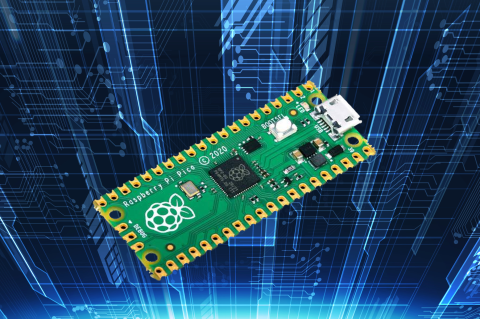How Close Are We? One Step Closer to Mapping the Human Brain

New ‘connectome’ maps some 25,000 neurons in a fruit fly’s brain, a portion of which are shown here (Image source: Google / FlyEM)
Sometimes I feel sad about all of the things we don’t yet know, but these feelings are usually counterbalanced by the excitement of all the things we are constantly discovering. Many of these discoveries are made possible by the technologies conceived by scientists and realized by engineers, such as the scanning electron microscope (SEM) and artificial neural networks (ANNs).
As discussed in the recent article Google Publishes the Largest Synapse-Resolution Map of Brain Connectivity on TechExplorist.com, for example, scientists took the brain of a fruit fly, stained it, and cut it into 20-micron thick slices. Bombarding these slices with a scanning electron microscope generated about 50 trillion voxels (3D pixels), which were subsequently analyzed using a new method they developed called flood-filling networks (FFNs) that employs convolutional neural networks (CNNs) to perform its magic.

The result was the “hemibrain” connectome, which is a highly detailed 3D map of the neuronal connectivity in a fruit fly’s brain, involving approximately 25,000 neurons that form more than 20 million synaptic connections.
It’s easy to disparage something as seemingly insignificant (and often annoying) as a fruit fly, but it’s amazing to me that the little scamps can perform all the tasks they do – finding food, eating, flying, avoiding predators (and humans trying to swat them), mating, and so forth – with brains comprising only ~25,000 neurons.
As an aside, I’m also amazed that the human genome is currently estimated to comprise only 20,000 to 25,000 genes, the majority of which code for proteins. These are the basic building blocks that are used to create magnificent creatures like yours truly (and you too, of course). It’s also somewhat discouraging to discover that we have around the same number of genes as a chicken, and fewer genes than a banana, which boasts about 30,000 of the little scamps, but we digress...
I’m currently reading The Body: A Guide for Occupants by Bill Bryson. Perhaps not his best work, but still jam-packed with nuggets of knowledge and tidbits of trivia. One thing I do like is how Bill brings up “common knowledge” facts that we’ve all heard, debunks them, and replaces them with the latest scientific findings, while also noting any “fuzziness” with regard to these “latest and greatest” pronouncements.
When it comes to the human brain, Bill notes that it’s between 70 and 80% water, with the rest being split mostly between fat and protein; also, that “the consistency of the brain has been variously likened to tofu, soft butter, or slightly overcooked blancmange.” As I sit here looking at my computer screen and typing these words, I have to say that this is a much less glamorous take on the way I normally visualize the seat of my consciousness.
According to Bill, the latest research suggests our brains contain around 86-billion neurons (a step down from the 100-billion number that was previously bounced around), and that each neuron connects with thousands of other neurons, resulting in trillions upon trillions of connections: “As many connections in a single cubic centimeter of brain tissue as there are starts in the Milky Way,” according to the neuroscientist David Eagleman.
On the one hand, we’ve discovered an awful lot about our brains; on the other hand, we really don’t have a clue. Take consciousness, for example, which was nicely described by Christof Koch in his What is Consciousness column in Scientific American as: “[...] everything you experience. It is the tune stuck in your head, the sweetness of chocolate mousse, the throbbing pain of a toothache, the fierce love for your child and the bitter knowledge that eventually all feelings will end.” But what exactly is consciousness? When I wake up in the morning from a deep sleep (or come to following an operation), how is it that I know who I am?
Do you recall my recent column, There's a Lot of Quantum About These Days? Well, there’s more than you might suppose. For example, the debate continues as to whether photosynthesis exploits the phenomenon of “quantum coherence” to gain its extreme light-harvesting efficiency, or whether this efficiency derive from excitons – that is, synchronization of wavelike electronic excitations -- between chromophores (see also Is Photosynthesis Quantum-ish? on PhysicsWorld.com).
In the context of this column, there is speculation that consciousness relies on quantum effects. As Peter Jedlicka says in his Revisiting the Quantum Brain Hypothesis: Toward Quantum (Neuro)biology? paper, “Accumulating evidence in non-neuronal systems indicates that biological evolution is able to exploit quantum stochasticity.” I couldn’t have put it better myself. If our minds do operate at a quantum level, this may explain quantum phenomena like the double-slit experiment, in which the act of observing not only disturbs what is being measured but may also dictate the results (see The Strange Link Between the Human Mind and Quantum Physics on BBC.com).
I’m sorry, I fear we have wandered off into the weeds, but that’s a great example of the weird and wonderful ways in which our brains work. I know that there is a vast gulf between mapping the synaptic connections linking the 25,000 neurons in a fruit fly’s brain and performing the same task on the 86 billion neurons in a human brain. I also know that our technologies are evolving at such a rate that the ability to fully map a human brain may come a lot sooner than we think.
There is already a lot of exciting work going on in the realm of brain-to-computer interfaces, one example of which is people who have lost limbs being able to control prosthetic replacements by simply thinking about what they want to do. There’s also a lot of scary work taking place in the area of brain-to-brain interfaces, in which signals from one person’s brain are recorded and transmitted into the brain of another person (see With New Technology, Mind Control is No Longer Science Fiction).
What will happen when we’re fully mapped all the synaptic connections in a human brain? Will this allow us to create a computer simulation of the brain? Will such a simulation be conscious in the way we understand it? Will it one day be possible to plant thoughts and memories into people’s brains (shades of the neo-noir science fiction movie Dark City)? I’m both excited and alarmed by the possibilities – how about you?









